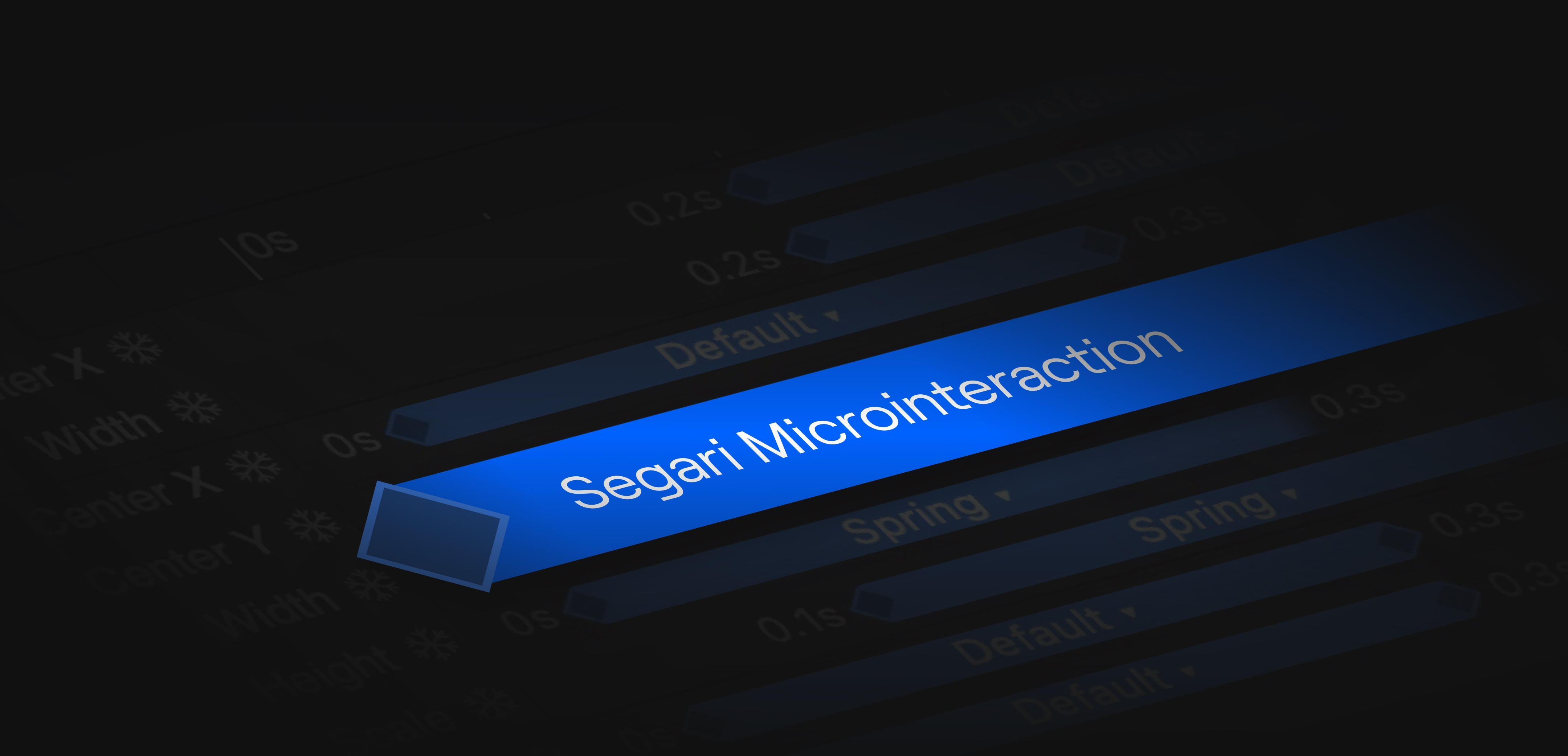
Segari micro-interaction
INTERACTION DESIGN
ROLE
UX / Motion Designer
COLLABORATORS
Ringgi Cahyo
Zikrul Ihsan
TOOLS
Figma
Principle
DOWNLOAD SEGARI.ID
✦ MAIN ISSUE
Having been spoiled (experience-wise) by app & tech giants like Apple, Instagram, etc., other app experience that doesnt offer the same experience will quickly raised an annoyance, at least for me. These seemingly 'invisible' experiences, turns out, were something deliberately placed by the designer and not always something pre-built/default in the development phase.
To put in context, Segari's transition between the initial white screen to the content load was janky. The content was abruptly "snapping" from one place to another and everything was seen suddenly appearing. This creates the perception of the app looking laggy and broken, even though everything was fine -- fast load, images are loaded, etc.
Loading Content...
VIDEO
OLD SEGARI CONTENT LOAD TRANSITION 👎
✦ DESIGN PRINCIPLE
My principle of micro-interaction design is rooted in the use of existing people's mental models of natural physics. Meaning that the interactions should behave in a way that customers expect based on real physics. When it comes to loading sequences, it's also important to be deliberate about the content that is being loaded. Typically, the most important content is revealed last to draw attention to its significance.
✦ EXECUTION & IMPLEMENTATION
I took the opportunity to improve the workflow between the design and development teams by communicating and deep diving a little bit learning their tools. Since the language between motion and development are now more standardized, (stuff like 'easings', 'bezier-curve', etc.), collaborations can be much more easier.
As most of the requirements for the micro-interaction were already supported by the dev tools without additional libraries, the next step came down to merely translating the interaction prototype to development. Requirements of which part goes first, durations, delays, easings, etc. And for the prototyping, tool-wise I mainly used Principle↗ and the handover is usually done by providing the recordings with the requirements above.
Loading Content...
VIDEO
1.1 Smoother loading sequence
From the showcase above, I added a combination of what is called a "Y-axis translation" or simply "move up a bit" and subtle opacity change. When the content appeared, a slight movement can be observed alongside a fading animation. This creates a whole lot smoother loading experience and is more natural for the human eye to perceive.
Loading Content...
VIDEO
1.2 Page fluidity. Rubber-band scroll effect
Loading Content...
VIDEO
1.3 Finger gestures to ease navigation. Swipe to back, pull to close, pull to refresh.
In addition, showcase 1.2 & 1.3 above shown the implemented gesture features enhancing the navigation experience. These include:
• The rubber band scroll,
• Swipe gestures for efficient navigation,
• Haptic feedback on certain key customer actions - such as add to cart, payment confirmed, etc.
✦ GALLERY OF EXPLORATION
Loading Content...
VIDEO
MANCU (APP MASCOT) DELIVERING GOODS SAFELY.
The idea was to illustrate a quick and serious delivery. We dont mess around.
Loading Content...
VIDEO
PROMOS
The team wanted to have a dedicated page for promos. To better differentiate and introduce each of section (and without overwhelming the customer), I opted with a sequential & staggered transition
Loading Content...
VIDEO
MANCU RIDING GAS ELPIJI
The idea was to encourage customers to purchase in bulk. I used a progress bar to create a sense of urge to fulfil the bar.
Loading Content...
VIDEO
MIX N MATCH
Loading Content...
VIDEO
TAP TO LIKE
In Segari, the like button is used to replace the add-to-cart button when a product is out of stock. An out of stock product has the highest potential for user dissatisfaction. To help redirect this emotion, exaggerating the love animation would help patching up the wound.
Loading Content...
VIDEO
Brand deals
Loading Content...
VIDEO
Special search results